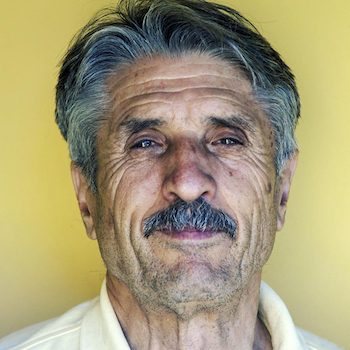
Mario Draghi Takes Aim at his Predecessor’s Faulty Financial Decisions
An expensive cashback bonus instituted in December by Italy’s then-Prime Minister Giuseppe Conte has reportedly been put on the chopping block by new Premier Mario Draghi. The Conte administration had earmarked a colossal €5 billion for the scheme, which would see shoppers receive an automatic 10% refund when making in-store payments with electronic payment methods—in an effort to revitalize the struggling economy while pushing Italians towards card payments to crack down on widespread tax fraud. Recent reports, however, suggest that the measure may be modified or curtailed entirely—just the latest indication of Draghi’s determination to limit spending to the most cost-effective projects as his nascent administration hashes out how to spend Italy’s €209 billion chunk of EU coronavirus recovery funds.
With just weeks left for the government to finalise its plans for the recovery windfall, Draghi has not divulged many details about his plan of action. The technocrat’s curriculum vitae, however, suggests that he prefers sound spending over utopian projects. This will mark a substantial change from Conte, who dedicated valuable resources to problematic pet projects like a planned merger between onetime telecom monopolist Telecom Italia and wholesale competitor Open Fiber, while dragging his feet on other issues, such as the badly needed privatisation of ailing bank Monte dei Paschi di Siena.
An unhappy union
Conte’s puzzling plan to merge Telecom Italia and Open Fiber will be one of Draghi’s first headaches to resolve. In a populist bid to create a single Italian broadband network, Conte’s government spent much of its last months in office pushing the merger of Open Fiber— inaugurated by the state in 2015 specifically to foster competition—with Telecom Italia. The new entity produced by the tie-up would be partly owned by state lender, Cassa Depositi e Prestiti, although Telecom Italia is hoping to stay in the driver’s seat with a 50.1% stake.
Other than Telecom Italia and Cassa Depositi e Prestiti, however, the proposed tie-up hasn’t earned many backers, raising alarm bells with consumer groups, industry experts, and politicians alike. The truth was that while “national champion” had a nice ring to it, Italy’s own experience has illustrated that stifling competition often causes more problems than it resolves. Italy’s telecoms market had already stagnated for decades under a Telecom Italia monopoly before Open Fiber was established because infrastructure development in less populated areas doesn’t offer returns attractive enough to motivate private investment.
Italians had no choice but to contend with Telecom Italia’s sluggish and expensive services if they even had a broadband connection at all. That is until the arrival of Open Fiber. This original all-Italian champion, which Telecom Italia has tried to lambast as a “failure,” has turbo-boosted Italy’s fibre rollout, connecting 8.5 million homes to the Internet and becoming the third-largest supplier of fibre-to-the-home in the entire bloc within three years. Conte’s attempts to roll back competition are unlikely to fly with the new government, particularly given how keen the EU is to see member states prioritize digitalisation in their recovery plans.
A bank in distress
While Draghi will need to deal with Conte’s overzealous attempts to reform the Italian industry by paring back competition, he will also need to address issues that Conte’s administration let fall by the wayside. Draghi’s background in the banking sector may come in handy, given that Italy’s Banca Monte dei Paschi di Siena has been burning a hole in the country’s pocket for over three years now. In the wake of a financial scandal in 2017, Italy was forced to bail out the failing bank for €5.4 billion in taxpayer’s money, awarding Rome a 68% ownership of this chronically unprofitable bank. Ever since then, successive governments have failed to recoup losses by selling off their shares in Monte dei Paschi di Siena.
Conte’s two administrations only aggravated the problem, stalling on passing the decree that would put the bank on the market— despite advice from the Treasury and the European Central Bank to expedite proceedings—in the hope that the state could keep hold of this national nightmare. When that strategy failed, the government attempted unsuccessfully to force Unicredit to pick up the tab.
When Conte’s administration then imploded in January, the stymied re-privatisation of the entity seemed further away than ever. As Draghi took the reins, insecurities were understandably running high in Italy’s financial sector as evinced by Marco Valli, an economist at Italy’s UniCredit bank last month, “We all know the reform priorities…the question is, will Draghi be able to fast-track the badly needed ones?” Valli’s fears seem to have been unfounded, however, as Draghi is tipped to push through the bank’s re-privatisation—and is well placed to execute the deal after he managed to privatise approximately 15% of the country’s economy in the 1990s as Italy’s former Treasurer.
Under Draghi, Italy is likely to see a return to concrete proposals rather than the fanciful popularity projects which characterised Conte’s administration, such as the cashback bonus. In a country of suffocating bureaucracy, proliferating regulations, regionalisms, and divisions, when Draghi pronounced in Rimini last year that “Now is the time for wisdom in choosing the future we want to build” his words were music to Italian ears. In order to shore up trust, the new prime minister will have to use the next few weeks to roll back the misguided policies of the Conte administration, such as the proposed Open Fiber/Telecom Italia merger, and address longstanding issues like the privatisation of Monte Paschi di Siena.

